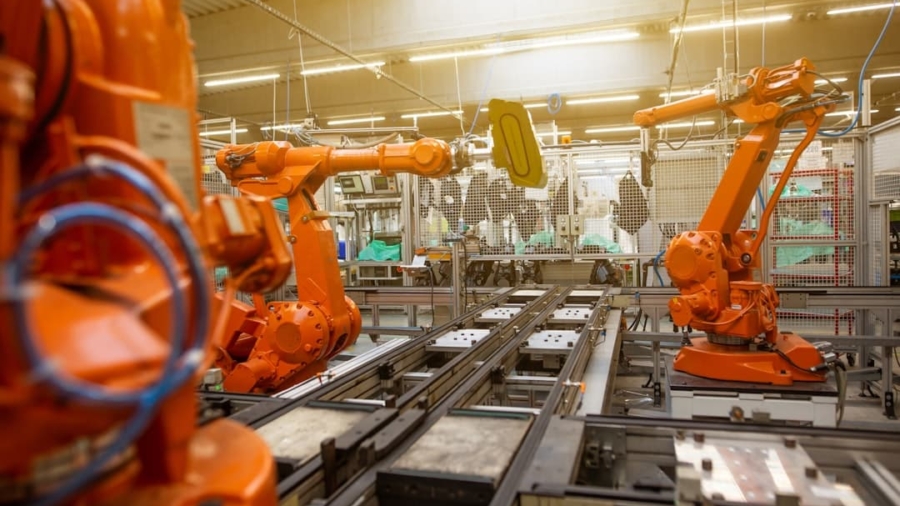Construction site waste is a significant concern in the building and infrastructure sectors, representing a substantial portion of the total waste generated globally. The construction industry is responsible for producing an estimated 30% of the world’s waste, which includes a variety of materials such as concrete, wood, metals, plastics, and hazardous substances. This waste not only contributes to environmental degradation but also poses challenges in terms of disposal and management.
As urbanization accelerates and infrastructure projects expand, the volume of waste generated on construction sites continues to rise, necessitating innovative solutions to mitigate its impact. The composition of construction waste varies widely depending on the type of project, materials used, and construction methods employed. For instance, a residential building project may generate different waste types compared to a commercial or industrial construction site.
Commonly encountered materials include excess concrete from pouring operations, scrap metal from framing, and packaging materials from delivered goods. The improper disposal of these materials can lead to pollution, habitat destruction, and increased greenhouse gas emissions. Therefore, addressing construction site waste is not only a matter of regulatory compliance but also a critical component of sustainable development practices.
Key Takeaways
- Construction site waste is a significant issue that has a negative impact on the environment and requires innovative solutions for management.
- Construction site waste contributes to pollution, resource depletion, and habitat destruction, making it crucial to address for sustainable development.
- Robotics play a crucial role in reducing construction site waste through automation of processes, material sorting, recycling, and efficient material handling.
- Automation of construction processes using robotics can significantly reduce waste generation and improve overall efficiency in construction projects.
- Case studies demonstrate successful implementation of robotics in construction waste reduction, paving the way for a promising future outlook for robotics in construction waste management.
The Impact of Construction Site Waste on the Environment
The environmental ramifications of construction site waste are profound and multifaceted.
Many construction materials are non-biodegradable and can take decades or even centuries to decompose.
As landfills reach capacity, new sites must be developed, often encroaching on natural habitats and agricultural land. This not only disrupts local ecosystems but also increases transportation emissions associated with hauling waste to distant disposal sites. Moreover, construction waste can lead to soil and water contamination.
Hazardous materials such as paints, solvents, and chemicals can leach into the ground, affecting groundwater quality and posing risks to human health and wildlife. Additionally, the incineration of construction waste can release toxic pollutants into the atmosphere, contributing to air quality issues and climate change. The cumulative effect of these environmental impacts underscores the urgent need for effective waste management strategies within the construction industry.
The Role of Robotics in Reducing Construction Site Waste

Robotics has emerged as a transformative force in various industries, and its application in construction waste management is no exception. By integrating robotic technologies into construction processes, companies can significantly reduce waste generation and improve overall efficiency. Robotics can streamline operations, minimize human error, and enhance precision in material usage, all of which contribute to less waste being produced on-site.
One of the key advantages of robotics in construction is their ability to perform repetitive tasks with high accuracy. For example, robotic arms can be programmed to cut materials to exact specifications, reducing the likelihood of excess material being wasted due to human error. Furthermore, robots can operate in hazardous environments where human workers may be at risk, allowing for safer and more efficient handling of potentially dangerous materials.
As the technology continues to evolve, the potential for robotics to play a pivotal role in waste reduction becomes increasingly apparent.
Automation of Construction Processes
The automation of construction processes through robotics not only enhances productivity but also plays a crucial role in minimizing waste generation. Automated systems can optimize workflows by ensuring that materials are used efficiently throughout the construction process. For instance, automated machinery can be employed for tasks such as excavation, concrete pouring, and bricklaying, all of which can be precisely controlled to reduce excess material usage.
Additionally, automation allows for real-time monitoring and data collection on material consumption and waste generation. By analyzing this data, construction managers can identify patterns and areas for improvement, leading to more informed decision-making regarding resource allocation and project planning. This proactive approach not only reduces waste but also contributes to cost savings and improved project timelines.
Robotics for Material Sorting and Recycling
One of the most significant challenges in managing construction site waste is the sorting and recycling of materials. Traditional methods often rely on manual labor for sorting recyclable materials from general waste, which can be time-consuming and inefficient. Robotics offers a solution by automating the sorting process, thereby increasing accuracy and speed while reducing labor costs.
Robotic systems equipped with advanced sensors and artificial intelligence can identify different types of materials based on their composition and properties. For example, robots can be programmed to distinguish between various metals, plastics, and wood types, allowing for more effective recycling efforts. By streamlining the sorting process, these robotic systems not only enhance recycling rates but also ensure that valuable materials are recovered and reused in future projects.
Robotics for Efficient Material Handling

Efficient material handling is another critical aspect of reducing construction site waste. Robotics can significantly improve how materials are transported and managed on-site, minimizing damage and loss during handling. Automated guided vehicles (AGVs) and drones are increasingly being utilized for transporting materials from one location to another within a construction site.
For instance, AGVs can navigate through complex job sites autonomously, delivering materials exactly where they are needed without human intervention. This reduces the risk of over-ordering or misplacing materials, which often leads to excess waste. Drones can also be employed for aerial surveys to assess material needs accurately before ordering supplies, ensuring that only what is necessary is procured.
By optimizing material handling processes through robotics, construction companies can significantly reduce their overall waste footprint.
Case Studies of Successful Implementation of Robotics in Construction Waste Reduction
Several case studies illustrate the successful implementation of robotics in reducing construction site waste. One notable example is the use of robotic arms at a large-scale commercial building project in San Francisco. The project utilized robotic technology for precise cutting and assembly of prefabricated components.
By automating these processes, the team was able to reduce material waste by over 20%, demonstrating how robotics can lead to significant improvements in efficiency and sustainability. Another case study involves a construction firm in Europe that integrated robotic sorting systems into their waste management practices. The company deployed robots equipped with machine learning algorithms capable of identifying various types of construction debris.
As a result, they achieved a recycling rate exceeding 80%, far surpassing industry averages. This success not only reduced landfill contributions but also provided valuable insights into material recovery that could be applied to future projects.
Future Outlook for Robotics in Construction Waste Management
The future outlook for robotics in construction waste management is promising as technology continues to advance at an unprecedented pace. Innovations in artificial intelligence, machine learning, and sensor technology will further enhance the capabilities of robotic systems in identifying, sorting, and managing construction materials more effectively than ever before. As these technologies become more accessible and affordable, their adoption across the industry is expected to increase significantly.
Moreover, as sustainability becomes a central focus for governments and organizations worldwide, regulatory frameworks will likely evolve to encourage or mandate the use of advanced technologies like robotics in waste management practices. This shift will not only drive innovation but also create new opportunities for companies that embrace these technologies early on. Ultimately, the integration of robotics into construction processes holds the potential to revolutionize how the industry approaches waste management, paving the way for a more sustainable future in construction practices globally.
In a related article discussing the importance of technology in various industries, How to Choose a Smartphone for a Chief Executive highlights the significance of selecting the right technology tools for executives to enhance productivity and efficiency. Just like robotics play a crucial role in reducing construction site waste, smartphones are essential tools for executives to stay connected and make informed decisions. Both articles emphasize the importance of leveraging technology to streamline processes and achieve better outcomes in different sectors.
FAQs
What is the role of robotics in reducing construction site waste?
Robotics in construction can help reduce waste by improving precision and efficiency in tasks such as material handling, cutting, and assembly. This can lead to less material waste and more accurate construction processes.
How do robotics contribute to reducing construction site waste?
Robotic technologies can optimize the use of materials, reduce errors in construction processes, and enable the recycling of materials. This can result in less waste being generated on construction sites.
What are some examples of robotic technologies used in construction to reduce waste?
Examples of robotic technologies used in construction to reduce waste include 3D printing for precise material usage, drones for site surveying and monitoring, and autonomous vehicles for material transportation. These technologies can help minimize waste and improve overall construction efficiency.
What are the benefits of using robotics to reduce construction site waste?
The benefits of using robotics to reduce construction site waste include cost savings from reduced material waste, improved construction efficiency, and a more sustainable approach to building. Additionally, it can lead to a safer working environment for construction workers.
Are there any challenges in implementing robotics to reduce construction site waste?
Challenges in implementing robotics to reduce construction site waste include the initial investment in technology, the need for specialized training for workers, and potential resistance to change in traditional construction practices. However, the long-term benefits often outweigh these challenges.

